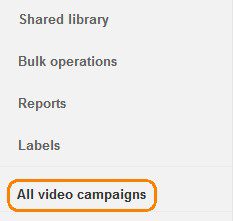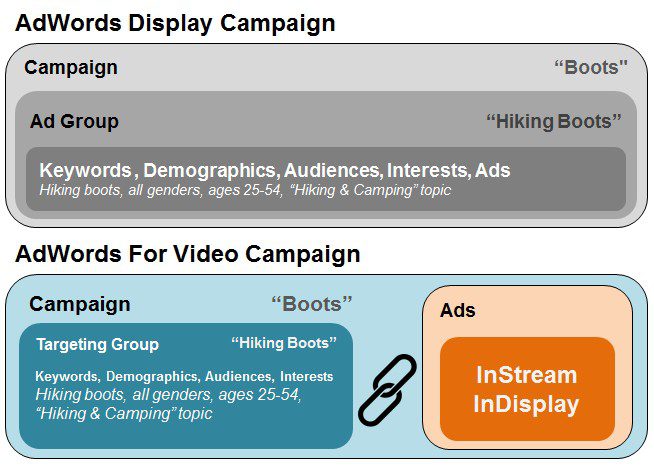 Your search results are on fire. You’ve had success with remarketing on Display. Your e-mail blasts keep past customers coming back.
Your search results are on fire. You’ve had success with remarketing on Display. Your e-mail blasts keep past customers coming back.
What is the next piece of the puzzle to keep up continuous growth? What can you be doing that your competitors may not be? For many retailers, the answer is video advertising.
When people aren’t searching or reading, they’re often watching YouTube. You likely already know that YouTube is the second biggest search engine overall with monthly searches in the billions and growing.
This world, while massive, is certainly is not limited to cat videos. More than ever before, your customers may be using YouTube to learn more about products before making purchase decisions. Product reviews, unboxing videos, and demonstrations are becoming more commonplace, especially in tech retail.
It’s important to first know that video advertising does not squarely fit the model of direct response in ecommerce. Much like with the Display Network, you are interrupting users and driving awareness (push communication), rather than intercepting specific demand (pull communication). However, the right approach can drive high volume of engagement at a very low cost compared to Search and Display. With careful targeting choices, this can be an excellent channel for driving new users into the top of the sales funnel.
To help you start your path to video advertising enlightenment, we’ll begin by touching on the primary formats available on YouTube, and to whom they are best suited.
InStream, the Skippable and Self-Qualifying Format
InStream is by far the most advantageous video ad format for advertisers. This is the format in which you see a “Skip Ad” button after five seconds of the video ad, which pre-rolls before the actual video the user wants to watch.
The biggest advantage is that you’re not openly paying for all impressions. You’re only paying for complete views of your ad and ad clicks. Thus, the users are self-qualifying themselves for your ads.
Views where the “Skip Ad” button is clicked are not charged to your account. One disadvantage, however, is that smaller advertisers may not have the resources to create video ads.
InDisplay, for Driving Activity in Your YouTube Channel
InDisplay is all inclusive of two previous formats, InSearch (ads showing at top of a YouTube search results page) and InDisplay (promoted listings showing next to a video being played). These two merged into the same type earlier this year to simplify the platform.
In this format, you’re creating a promoted listing (a video on your own channel) to send users to. The experience for users here is different because you’re taking them to a video instead of your home page (where you can more easily plug a promotion or show an array of relevant products).
This is more ideal for retailers who have a great YouTube presence, including a brand channel with engaging content.
How Do I Target My Ads on YouTube?
If you’re already familiar with how Display Network advertising is targeted, you’ll feel very at-home with YouTube, as AdWords for Video is built from the ground up to be very similar. You begin with the “AdWords for Video” link hiding below your left-hand campaign navigation in AdWords.

You should first familiarize yourself with the slightly different “structure” to these campaigns. Instead of “Ad Groups” within Campaigns, you have instead “Targeting Groups.” Ads are maintained in a separate Ads tab and are assigned to Targeting Groups individually.
With this structure, you can assign a single ad to many Target Groups, rather than having one ad duplicated out into many Target Groups. This simplifies the setting up of ads, but may introduce difficulties for a few advertisers who need to custom tag their URLs for each target group.
Just like with the Display Network, these Dimensions are available to you:
- Keyword targeting (target content revolving around a particular theme): Like Display, there is not a ton of room for advanced granularity here. It’s recommended that you stick with top-level subjects and avoid very long-tail keywords.
- Interests (target subjects that users show some consistent interest in): This distinctly involves targeting users interested in a subject, and not the interest specific content itself. If you target a sub-category about shoes, your ads will still show on everything from music videos to viral content, but only to users who have shown consistent interest in that subject.
- Topics (target content subjects in particular): This is the polar opposite of interests. You’re only targeting content about that particular subject. With this, you can expect a more uniform mix of content that matches the subject. Specifically, targeting “exercise” subjects will largely result in fitness videos.
- Audiences (remarketing and behavior based retargeting): One excellent advantage of already having remarketing audiences in your AdWords account is that they can be directly imported to YouTube and used for targeting. This can be a highly useful layer to add (such as ‘all site visitors’, ‘cart abandoners’, or ‘past customers’) to keep your campaign scale limited to a more qualified audience.
- Demographics (gender and age, based on inference or Google account info): If your ideal customer fits a specific demographic profile, this is the place to leverage it. For example, a women’s designer apparel brand can set their targets exclusively on female audiences aged 25 to 45.
If you know your customers well, you should use a combination of the above dimensions that best suits them. For example, a ladies clothing retailer may use these combinations
- Keywords: ‘womens boots’, ‘womens footwear’, ‘womens shoes’
- Interests: “Apparel > Women’s Apparel”
- Demographics: “Women; ages 18-25, 26-34, 35-44”
A real gem here is audience targeting. If you have remarketing lists that work well for you on Display, you may also use them here to reach them directly with video ads. Similarly, you can also negative out less ideal audiences (such as recent converters, or demos who don’t fit your customer profile) which will help tighten up your targeting.
How Do I Measure Success with YouTube?
The savviest advertisers know that success measurement is not solely isolated to direct conversion in branding and awareness channels. Measuring success here also means understanding the first-time interactions generated in that space that may later drive conversion from other sources. Leveraging Google Analytics reports that help you view the complete purchase path, such as Multi-Channel Funnels, are excellent for measuring how YouTube ads drive first-time users to your website and how they revisit and purchase after that first interaction.
As goals differ greatly in various industries, there’s no single blanket strategy to measuring YouTube success. But much like Display, the goal with AdWords for Video is primarily to increase branding and awareness within your competitive space. YouTube serves to these purposes foremost, but can also be incorporated into other strategies as well.




